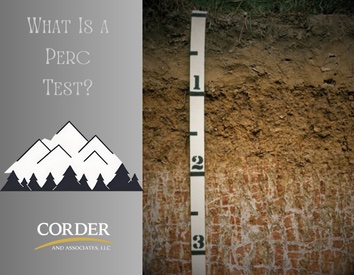Investing a substantial amount of money in an empty plot of land can bring up a crucial factor that might appear trivial initially but could significantly impact the success of the land transaction.
The Importance of the Perc Test
A Perc Test, also referred to as a “Perk Test” or formally as a Percolation Test, assesses how quickly water permeates through the soil. This evaluation provides essential data necessary for planning and setting up a septic system, particularly for properties without access to a municipal sewage system. The procedure involves digging a hole in the ground, pouring water into it, and observing how fast the water is absorbed into the soil. Typically, properties pass the perc test easily if the soil contains more sand (as sand absorbs water faster than clay or silt) and if the property is located in an area with a low water table.
Why a Perc Test?
If the property you’re looking into purchasing isn’t near an existing sewer system, it’s time to consider a septic system’s feasibility. County health departments require perc tests to determine possible septic systems. Most septic systems globally include a drain field or “leach field” to manage excess water. Solid waste settles in the septic tank, while perforated pipes distribute wastewater to the drain field.
The drain field traps and eliminates contaminants in the soil through percolation, evaporation, plant root absorption, and water recycling back into the groundwater or surface water. The drain field size is determined by the anticipated wastewater volume from the septic system, typically based on the building’s size.
How to Conduct a Perc Test
Performing a perc test can vary significantly based on the site’s requirements and conditions. While some scenarios demand heavy machinery and professional assistance, others may only involve manual drilling and soil sampling. The process’s complexity is influenced by factors such as Health Department regulations, site location, planned land use, and soil composition. It is crucial to ensure that the test complies with the regulations and standards of your local area.
How Much Does a Perc Test Cost?
Performing a perc test always comes with a price tag. The cost can vary from $150 to $1,500, depending on the service provider and the extent of work needed. Typically, it tends to be on the lower end of this range. If you’re seeking a general idea of a property’s percolation capability, you might not need to invest $1,500. You could even conduct the test yourself with basic tools like a shovel, a bucket of water, and some knowledge. For absolute certainty in a property’s percolation ability, it’s advisable to arrange a perc test under the supervision of the local health department. They are required to witness the test and grant final approval. However, if you’re open to some level of uncertainty, there are indicators you can consider before deciding whether a perc test is necessary. Here are some visible aspects to take into account:
- Examine adjacent properties to see if they have passed perc tests. If neighboring parcels have passed, there’s a likelihood (though not guaranteed) that your property could pass,
- Check for nearby bodies of water. Properties near water sources may have a high water table, wetlands, or proximity to flood zones. While these factors don’t always correlate with percolation ability, they may warrant heightened caution and further investigation before committing to a perc test.
- Evaluate your property’s topography. Is it elevated or in a valley? Does it have slopes with varying elevations? In certain scenarios (like differing soil types or high water tables), a vacant lot may fail its perc test at a lower elevation but pass at a higher one. Properties with varying elevations present an opportunity, as they might pass at the higher end even if they fail at the lower end.
How to Arrange a Perc Test
When it’s time to engage a professional to assess your property, simply reach out to your county health department. Look up the county’s name followed by “Health Department” online to find their contact details. Inquire about the specific requirements for accurately conducting a perc test. In certain counties, the health department handles all aspects of the test. In others, they may mandate a licensed excavator to perform the necessary digging beforehand. Keep in mind that regulations vary depending on your property’s location. Therefore, before taking any significant steps, ensure you understand the correct procedures directly from the source. Armed with the correct information, you’ll be ready to proceed swiftly.
Alternatives If Your Land Fails the Perc Test
- Check previous perc test records and explore different sections of the property.
- Inquire about appealing the test results and consider seasonal variations in water table levels.
- Explore modified septic systems or wait for municipal water and sewer availability. Soil types and topography can affect results, so test different areas. Engineering solutions or raised sand beds may overcome drainage issues with approval from the Health Department.
And don’t forget – there are all kinds of alternative uses for properties that don’t even require a septic system. For example:
- Storage Units
- Pole Barns
- Horse Stable
- Grazing Fields
- Crops & Farming
- Orchard
- Camping
- Hunting
- Lumber
- Mining
- Drilling
With a little creativity, almost any property can be put to good use. Reach out to us if you have questions about land. Our experts will use their knowledge or diligently work towards getting you an answer. As one of your smartest investments, we make sure you conduct due diligence to make an informed decision.




